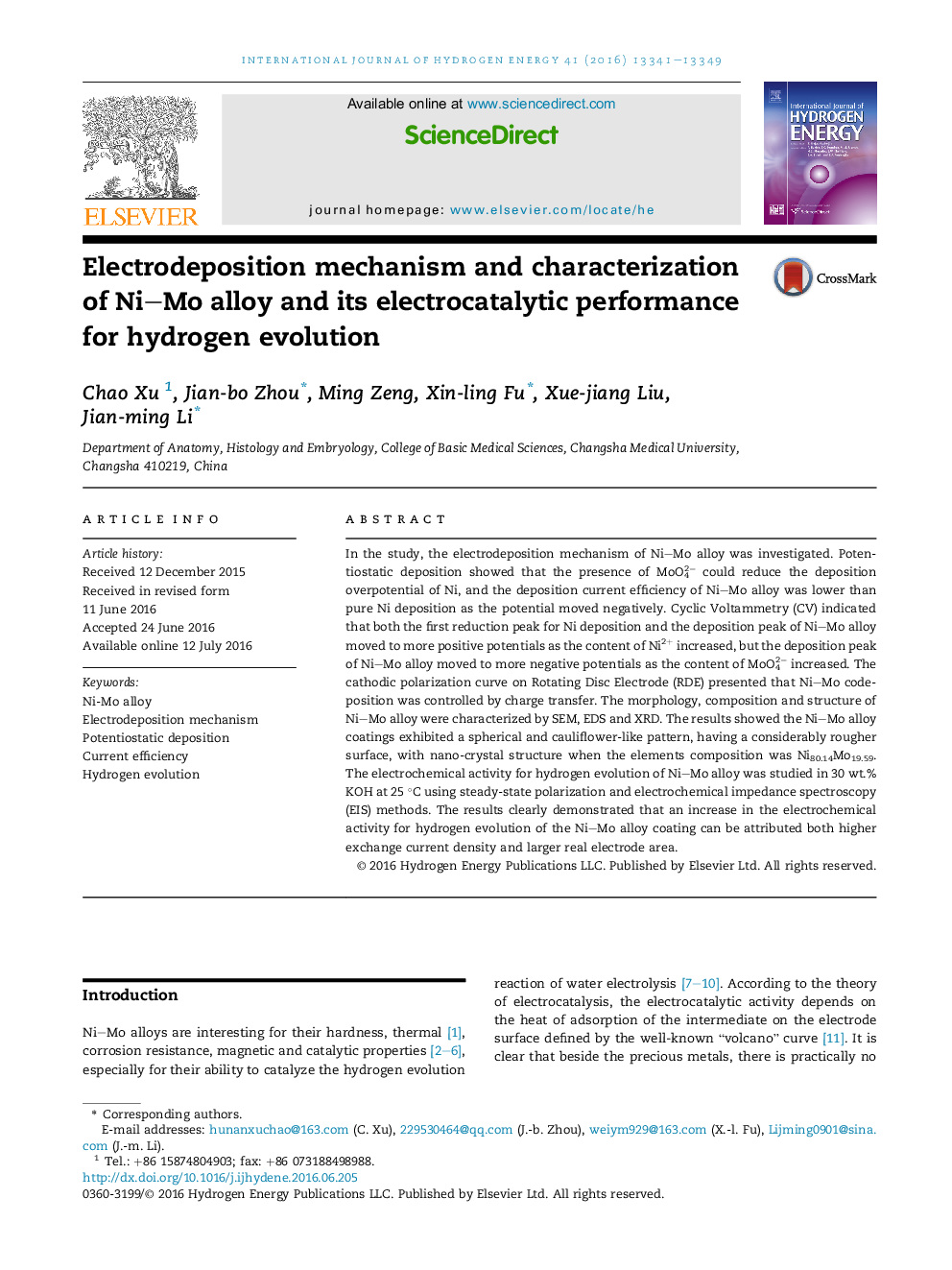| کد مقاله | کد نشریه | سال انتشار | مقاله انگلیسی | نسخه تمام متن |
|---|---|---|---|---|
| 1276447 | 1497394 | 2016 | 9 صفحه PDF | دانلود رایگان |

• The electrodeposition mechanism of Ni–Mo alloy was investigated.
• The Ni80.14Mo19.59 alloy coatings exhibited a spherical and cauliflower-like pattern, with nano-crystal structure.
• The Ni–Mo alloy had better catalytic activity for hydrogen evolution.
In the study, the electrodeposition mechanism of Ni–Mo alloy was investigated. Potentiostatic deposition showed that the presence of MoO42− could reduce the deposition overpotential of Ni, and the deposition current efficiency of Ni–Mo alloy was lower than pure Ni deposition as the potential moved negatively. Cyclic Voltammetry (CV) indicated that both the first reduction peak for Ni deposition and the deposition peak of Ni–Mo alloy moved to more positive potentials as the content of Ni2+ increased, but the deposition peak of Ni–Mo alloy moved to more negative potentials as the content of MoO42− increased. The cathodic polarization curve on Rotating Disc Electrode (RDE) presented that Ni–Mo codeposition was controlled by charge transfer. The morphology, composition and structure of Ni–Mo alloy were characterized by SEM, EDS and XRD. The results showed the Ni–Mo alloy coatings exhibited a spherical and cauliflower-like pattern, having a considerably rougher surface, with nano-crystal structure when the elements composition was Ni80.14Mo19.59. The electrochemical activity for hydrogen evolution of Ni–Mo alloy was studied in 30 wt.% KOH at 25 °C using steady-state polarization and electrochemical impedance spectroscopy (EIS) methods. The results clearly demonstrated that an increase in the electrochemical activity for hydrogen evolution of the Ni–Mo alloy coating can be attributed both higher exchange current density and larger real electrode area.
Figure optionsDownload as PowerPoint slide
Journal: International Journal of Hydrogen Energy - Volume 41, Issue 31, 17 August 2016, Pages 13341–13349